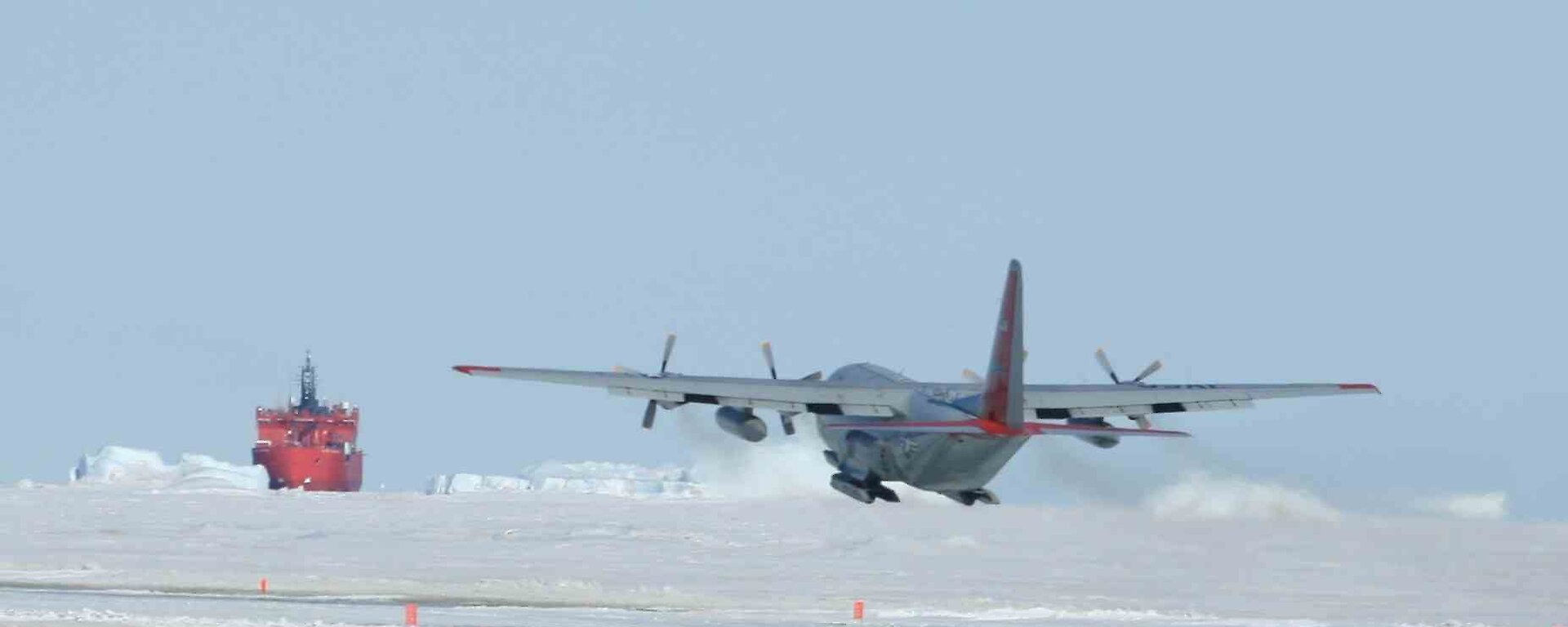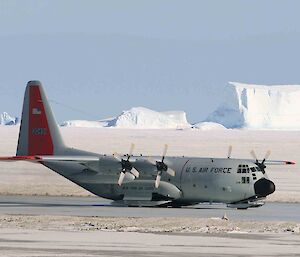The United States Antarctic Program has assisted in the evacuation from Antarctica of injured Australian expeditioner Dwayne Rooke of Devonport, Tasmania.
An LC-130 Hercules military aircraft, assigned to the 13th Air Expeditionary Group, landed on a temporary runway that had been prepared at Australia’s Davis station. The sea-ice runway, which is 3000 metres long on ice 1.8 metres thick, was prepared by station personnel over the past week.
Mr Rooke was evacuated in a 10-hour flight to hospital in Hobart, Tasmania. A combined US and Australian medical team was on board to assist in the evacuation. Mr Rooke’s condition is described as serious but stable.
Mr Rooke suffered multiple fractures when he came off a quad bike on Monday 20 October while on a field trip at Trajer Ridge, around 25 kilometres from Davis station where he had spent almost the past 12 months as the station’s chef.
The Director of the Australian Antarctic Division, Dr Tony Press, said he was very grateful to the National Science Foundation — which runs the US Antarctic program — and other US agencies for their help in this medical evacuation.
“Our collaboration on this operation is a tribute to our excellent relationship with the US Antarctic Program and a fantastic example of the collaboration that typifies Antarctic operations.
“The assistance of the US has enabled a quicker and more stable evacuation option than Australia’s research and resupply ship Aurora Australis, which has now reached Davis after being diverted from Casey station soon after the incident occurred.
“The ship’s progress to Davis over the past week has been slowed by bad weather and heavy sea-ice so last night’s air evacuation was a very welcome and much speedier option,” Dr Press said.
Dr Press went on to thank others involved in the evacuation effort.
“I would like to acknowledge the outstanding effort of the doctors and lay medical team at Davis station in keeping the patient stable and comfortable around the clock for more than two weeks until his evacuation.
“The whole team at Davis station contributed to an excellent result in difficult circumstances, from those who built the temporary sea-ice runway to those who kept the station running and supported the evacuation efforts in many different ways.
“Many thanks also to those on board the Aurora Australis who diverted from their planned route and provided valuable support to this operation by flying in relief medical staff and supplies. The patience of those whose scheduled work has been affected by this incident is appreciated, including wintering expeditioners at Casey station whose return to Australia has been delayed.
“Staff of the Australian Antarctic Division and throughout the Antarctic program have provided extraordinary efforts over the past two weeks to ensure Mr Rooke’s successful transportation to specialist care and I thank every person involved in this endeavour for their hard work and dedication.
“It’s terrific to see how everyone pulls together at times like these to achieve such a positive and satisfying result,” said Dr Press.
Aircraft facts
Turbo-prop LC-130 Hercules aircraft are ski-equipped aircraft used by the United States Antarctic program. The primary purpose of the LC-130 aircraft is to support the US scientific community in the Antarctic by transporting cargo and personnel from McMurdo station to various field stations and camps, including the Amundsen-Scott South Pole station.
The specialist nature of the aircraft, coupled with the expertise of the US Air Force and Army flight and medical personnel, made it an ideal option for this type of operation. The plane used in the evacuation was deployed to the US Antarctic station McMurdo before flying on to Davis for last night’s airlift.
The LC-130 aircraft are equipped with fully retractable skis that allow the aircraft to land on snow and ice as well as on traditional runways. The aircraft have provisions for using jet-assisted-takeoff rockets, four on each side of the aircraft, that are used when the LC-130 operates from rough, unprepared snow surfaces or when shorter takeoff runs are needed.



